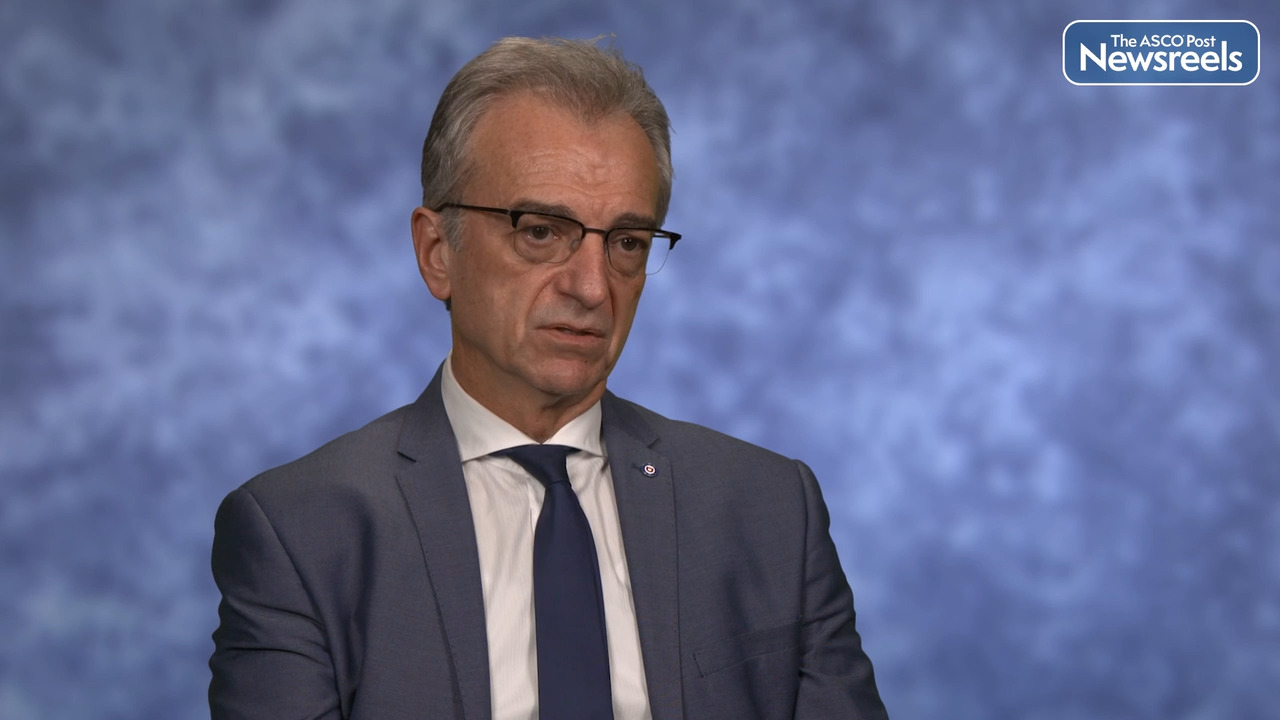Transcript
Disclaimer: This video transcript has not been proofread or edited and may contain errors.
We performed a study in patients with non-metastatic castration-resistant prostate cancer. What we know is that some patients that have a prostatectomy or primary radiation have a biochemical relapse. We know that salvage radiation works for some but doesn't cure all, likely because there's micrometastatic disease outside of the pelvis. We thought that if we can target those micrometastatic sites, then maybe we can salvage a cure, or at least delay time to metastatic disease.
We know that PSMA, or prostate-specific membrane antigen, is expressed on the majority of prostate cancer cells. We developed antibody JA591 to be able to recognize these cells, and we are able to label JA591 with different radionuclides. In this study we used Lutetium-177, which is primarily a beta emitter, for therapy, but also some gamma emission for imaging. As a control we used Indium-111, which is a gamma emitter, for imaging, as some weak [inaudible 00:01:11]. Patients enrolled had high-risk non-metastatic disease, as defined by a PSA-doubling time of less than eight months, or a absolute PSA of greater than 20. And no metastatic disease on conventional imaging, meaning that CT or MRI as well as bone scan were negative.
We used a backbone hormonal therapy of ketoconazole hydrocortisone, that that went on for approximately a month, and then they received a single dose in a two-to-one ratio of Lutetium to Indium, stratified by the investigational site and primary therapy. The primary endpoint of this study is 18 month metastasis-free survival, and it was powered to have a sample size of 55.
In the intent to treat analysis of the primary endpoint, there were more patients that were alive and without metastis, 50% of them, at 18 months that had received Lutetium-177, versus 24% who were alive without metastis at 18 months in those that received Indium. The secondary efficacy analysis also pointed towards Lutetium-177 as superior. Those included by a chemical PFS, median metastasis-free survival, as well as PSA declines both in terms of 50% and 90%. Adverse events occurred, of course, in any clinical trial. In the Lutetium arm, as expected, there was more myelosuppression, with higher rates of grade 3/4 neutropenia, including one episode of febrile neutropenia, and high-grade thrombocytopenia, including 25% who required at least one platelet transfusion.
In summary, in this group of patients that had high-risk non-metastatic prostate cancer, in a study that was performed in the pre-PSMA PET era, and also prior to the approval of the modern and receptor-signaling inhibitors that are now approved in this setting, Lutetium-177, radiolabeled JA591, resulted in fewer metastis or deaths by 18 months compared to the Indium control. This study was performed in a prior era, and the landscape has changed. We now have three approved end receptor signal inhibitors. Each one of them is approved because of a delay in time to metastatic disease, and also lead to an improvement in overall survival with the maintenance of quality of life.
In addition, we now have PSMA PET imaging, so the patients that we used to call non-metastatic castrations-resistant prostate cancer really are probably better termed low burden of disease or low volume metastatic prostate cancer, because in the vast majority we know that we can see sites of disease on PET scans. So I believe that this proof of principle study would make sense to be able to move to the next step if we were to combine one of these ARSIs with a PSMA -targeted agent. I don't know that this would be the agent of choice going forward, now that we have more choices. I think the antibody approach is nice, but now that we have alpha inhibitors, I think that is a potential for the future. Or we can combine with one of the small molecules that's already approved for the truly metastatic castration-resistant patient population.





